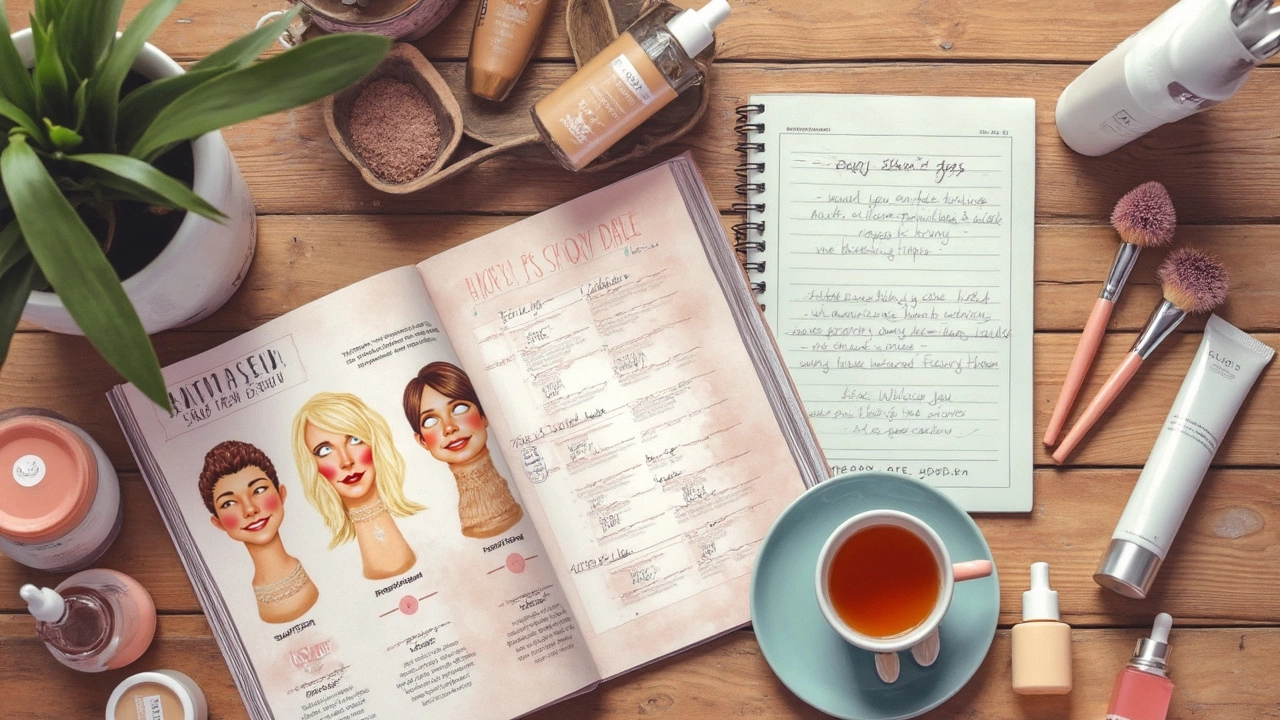
Everyone's looking for the secret to looking younger, but most quick fixes are just hype and hope. If you're tired of guessing what actually works, you're in the right spot. Forget miracle creams promising to erase ten years overnight—they rarely deliver real results. Instead, let's zero in on what actually works against wrinkles, dullness, and sagging.
Why does skin even age, anyway? It's not just about getting older or skipping sunscreen (though that's a big one). Everyday stuff like stress, lack of sleep, and even your phone screen can speed up lines and dark spots. Understanding these triggers gives you an edge—you can fight back way earlier than you think.
The truth? No single magic bullet. But there are proven ways, backed by actual studies, that can slow things down and even reverse some signs of ageing. Some require a trip to the dermatologist, while others can start right at home. You'll want to know which treatments are worth the money—and which are all talk. Ready to separate fact from fiction?
- Why Skin Ages: The Real Triggers
- Everyday Habits That Speed Up Ageing
- What Science-Backed Treatments Do (And Don’t Do)
- Are High-Tech Procedures Worth It?
- Simple Tips That Make a Difference
Why Skin Ages: The Real Triggers
This whole anti-ageing thing starts with understanding the actual reasons skin changes over time. Skin loses bounce, forms lines, and gets spots mostly because of a few major triggers that work together—and not just because you celebrated another birthday.
The biggest culprit is the sun. UV rays break down collagen and elastin, those proteins that make your skin firm and stretchy. Even short bursts of daily sun can add up. According to Dr. Heather Rogers, dermatologist and founder of Modern Dermatology,
“Over 80% of visible skin ageing is caused by sun exposure, not time passing. This means prevention is in your hands.”
But it's not just about rays. Here's what else is at work:
- Genetics: Your family tree shapes how you age, thanks to your DNA. Some folks just naturally wrinkle sooner or later than others.
- Loss of collagen: Collagen starts dropping fast in your late 20s. By age 50, you could have less than half of what you started with. Less collagen equals thinner, saggy skin.
- Environmental junk: Pollution and smoke dump free radicals into your skin, speeding up damage. Living in a city? Double trouble.
- Bad habits: Not enough sleep, loads of stress, sugar-loaded diets, and skipping water all mess with your skin’s repair system.
- Screens: Blue light, especially from your phone or computer, may also mess with your skin—studies have shown it can lead to uneven tone and signs of early ageing.
Let’s put some numbers on it. Check out these causes and their impact:
| Trigger | Estimated Impact on Ageing Signs |
|---|---|
| Sun Exposure | ~80% |
| Genetics | ~10% |
| Pollution, Habits, Blue Light | ~10% |
The point is, how you take care of your skin matters. The best anti-ageing plan starts with fighting these triggers early, not after lines show up. And you probably have more control over them than you think.
Everyday Habits That Speed Up Ageing
Most people blame ageing on genetics, but daily routines make a huge difference. Some habits quietly chip away at your skin's youth, inviting those fine lines and spots way sooner than you'd expect. The surprising part? These are things a lot of us do without even thinking about it.
Not wearing sunscreen is the biggest culprit. Sun damage speeds up anti-ageing concerns by breaking down collagen and causing spots. Even on cloudy days, sneaky UV rays get through—so skipping SPF is basically fast-forwarding wrinkles.
Bad sleep? Your skin pays for it. Studies show that people getting less than 6 hours of sleep per night tend to have more uneven skin tone and lose elasticity faster. The repair work mostly happens while you snooze, so don’t skimp on your pillow time.
Too much sugar in your diet does more than expand your waistline—it messes up your skin’s fibers. The sugar binds to collagen in a process called glycation, making skin stiffer and more likely to wrinkle. Processed foods and sweet drinks make the problem worse.
Stress is another silent ageing agent. Constant stress triggers hormones that break down skin’s support structures, leading to sagging and dullness. And if you’re always squinting at your phone, those little lines pop up faster around your eyes and forehead.
- Skincare doesn’t work its magic if you don’t take makeup off before bed. Leftover makeup clogs pores and increases fine lines by blocking natural repairs.
- Drinking too little water? Dehydrated skin loses bounce, making lines show up clearer.
- Smoking doesn’t only hurt your lungs. It limits blood flow, leaving your skin looking dull and thin while boosting the breakdown of collagen.
| Habit | Impact on Ageing |
|---|---|
| No daily SPF | Increases wrinkles, sun spots, rough texture |
| Poor sleep | Less skin repair, uneven tone |
| High sugar diet | Breaks down collagen, more wrinkles |
| Smoking | Dull, thin skin, faster sagging |
The good news? Small tweaks kickstart benefits right away: pop a broad-spectrum sunscreen in your bag, trade out soda for water, and make bedtime a priority. Give it a few weeks, and you’ll usually notice a difference—not just in your skin, but in your overall energy, too.

What Science-Backed Treatments Do (And Don’t Do)
Let’s cut through the noise—when it comes to anti-ageing, some treatments actually work and others just sound impressive. Here’s the honest scoop from real research, dermatologist input, and clinical trials.
First up: retinoids. These vitamin A creams (think tretinoin, adapalene, or retinol) are hands-down the most studied anti-ageing ingredients. They boost skin cell turnover, smooth fine lines, and fade dark spots. Retinoids are prescription-strength, while retinol is found in over-the-counter skincare. Both work, but the stronger stuff gets faster results. Expect some redness or dryness while your skin adjusts—it’s normal.
Sunscreen isn’t sexy, but it’s non-negotiable if you want smoother, younger-looking skin. No joke: 80% of skin ageing comes from the sun, even on cloudy days. Use a broad-spectrum SPF 30 or higher daily. The real magic isn’t just about avoiding burns—it’s about holding off wrinkles, brown spots, and even sagging.
Next, there’s chemical exfoliation, which gently scrubs away old, dull skin. Ingredients like glycolic acid, lactic acid, and salicylic acid make your skin look fresher and help fade mild discolouration. Keep in mind, overdoing it can irritate, so stick to a couple of times a week max for most people.
You’ve probably heard about peptides and antioxidants in moisturizers and serums. Here’s the real deal: antioxidants like vitamin C can help fight free radicals, the sneaky stuff that wrecks collagen and causes wrinkles. Peptides have some early research suggesting they might nudge your skin into making more collagen. The thing is, don’t expect overnight miracles—these are most useful for long-term maintenance, not instant results.
If you’re thinking about stronger treatments done by a pro, here’s a quick breakdown:
- Botox is great for dynamic wrinkles (think crow’s feet and frown lines). Results show up in days and last 3-4 months.
- Fillers can plump sagging areas or smooth deep creases. Results are instant but temporary (6 months to 2 years).
- Laser treatments target texture, sunspots, and wrinkles. Multiple sessions needed, and expect some downtime.
- Microneedling boosts collagen and helps with scars and texture, but takes a few sessions to see major changes.
Here’s a quick way to see how some of the most common science-backed anti-ageing treatments measure up:
| Treatment | Best For | Time to See Results | Cost (approx.) |
|---|---|---|---|
| Retinoids | Fine lines, uneven skin | 8-12 weeks | $20-100/month |
| Sunscreen | Prevention | Immediate/long-term | $10-40/month |
| Botox | Wrinkles from movement | 3-7 days | $300-600/session |
| Laser | Sun damage, texture | Weeks after series | $400-3,000/treatment |
Not every treatment lives up to the hype. Creams with collagen? Your skin can’t absorb it—save your money there. Fancy jade rollers and LED masks? The science just isn’t there yet, especially compared to tried-and-true basics. Stick with what’s proven, and your anti-ageing results will show up a lot faster—and last longer, too.
Are High-Tech Procedures Worth It?
This is the part everyone’s curious about: are the flashy anti-ageing lasers, peels, and injectables really all that? Short answer: some work, some are mostly marketing. Let’s break down the ones people ask about the most.
First up, lasers. Fraxel and other resurfacing lasers can really make a difference for wrinkles, sunspots, and even old acne scars. They work by creating tiny injuries, kicking your skin’s repair process into high gear—hello, fresher collagen. Most people see smoother skin in a few weeks, though you might need a few sessions, and it’s not cheap.
Then there are injectables—think Botox and fillers. Botox stops muscles from making those deep “expression” lines, especially around the eyes and forehead. Fillers plump up areas that get hollow with age (cheeks, under the eyes, lips). Results show up fast, but wear off after a few months, so you’ll be back for more if you want to keep the look. Just be careful who does them; a bad injector can leave you looking... well, not great.
Microneedling with radiofrequency is another trendy one—tiny needles plus heat to boost collagen. Clinical trials show it can make skin firmer and smoother, but it depends on your skin type and who’s doing the work.
Chemical peels—yep, they’re still around. A strong peel, done by a professional, can reduce fine lines and dark spots, but the recovery isn’t always fun. Redness, peeling, and downtime are part of the deal.
| Procedure | Average Cost (USD) | Downtime | How Long Results Last |
|---|---|---|---|
| Laser Resurfacing | $1,000–$3,000 | Up to 7 days | 1–2 years |
| Botox | $250–$650 per area | None to 1 day | 3–5 months |
| Fillers | $600–$2,000 | None to 2 days | 6–18 months |
| Microneedling (with RF) | $600–$1,200 | 2–5 days | 6–12 months |
| Chemical Peel | $200–$900 | 3–10 days | Months to years |
Dr. Anna Chacon, a board-certified dermatologist, says,
"High-tech anti-ageing treatments can offer visible results—if you’re consistent and get them done by a licensed professional. But remember, they work best when combined with solid everyday skincare."
So, is the splurge worth it? If you’ve got the budget and want fast results, these procedures can be game changers. But they’re not permanent fixes. Regular maintenance, sun protection, and a good everyday routine still matter most for the long haul.

Simple Tips That Make a Difference
If you want results without breaking the bank, focusing on small, daily habits is key. Loads of people skip these basics but they actually matter way more than any fancy treatment. Here’s where real anti-ageing progress starts.
- Sunscreen every day. Not just on beach trips, but every time you leave the house. UV damage is the number one cause of wrinkles and spots. Dermatologists mean it when they say sunscreen is non-negotiable. Broad-spectrum SPF 30 or higher is your best friend.
- Consistent skincare routines. You don’t need a dozen steps or crazy expensive products. Stick with the basics—cleanser, moisturizer, and a proven anti-ageing serum like retinol or vitamin C. These aren’t just buzzwords; they actually help boost collagen and fight dullness.
- Hydration inside and out. Drinking enough water won’t magically erase wrinkles, but dry skin always looks older. Use a moisturizer that suits your skin type to lock in hydration.
- Don’t smoke and limit alcohol. Smoking cuts down blood flow, making your skin look dull and causing those obvious lines, while too much drinking dehydrates your skin and speeds up ageing. Both are easily avoidable risk factors.
- Prioritize sleep and stress management. People who chronically lack sleep tend to have more fine lines and uneven skin tone. Stress ups cortisol, which breaks down collagen—your skin’s main support system. Try whatever works for you: a set bedtime, meditation, less scrolling in bed.
Want some numbers? Check out this quick table showing the impact of a few key daily habits on skin ageing, pulled from actual studies:
| Habit | Impact on Ageing |
|---|---|
| Daily Sunscreen Use | Reduces skin aging signs by 24% after 4.5 years (Annals of Internal Medicine, 2013) |
| Regular Sleep (7-8 hrs/night) | Improves skin barrier recovery by up to 30% (University of Wisconsin Study) |
| No Smoking | Less wrinkle formation vs. smokers by age 40 |
None of these steps are wild or new, but put them together and you’ll see way better results than any one high-end cream alone. The best part? You’re building habits that keep giving back over time—and that's the real anti-ageing win. Start with these tips before worrying about the latest buzz in skincare or high-tech treatments.